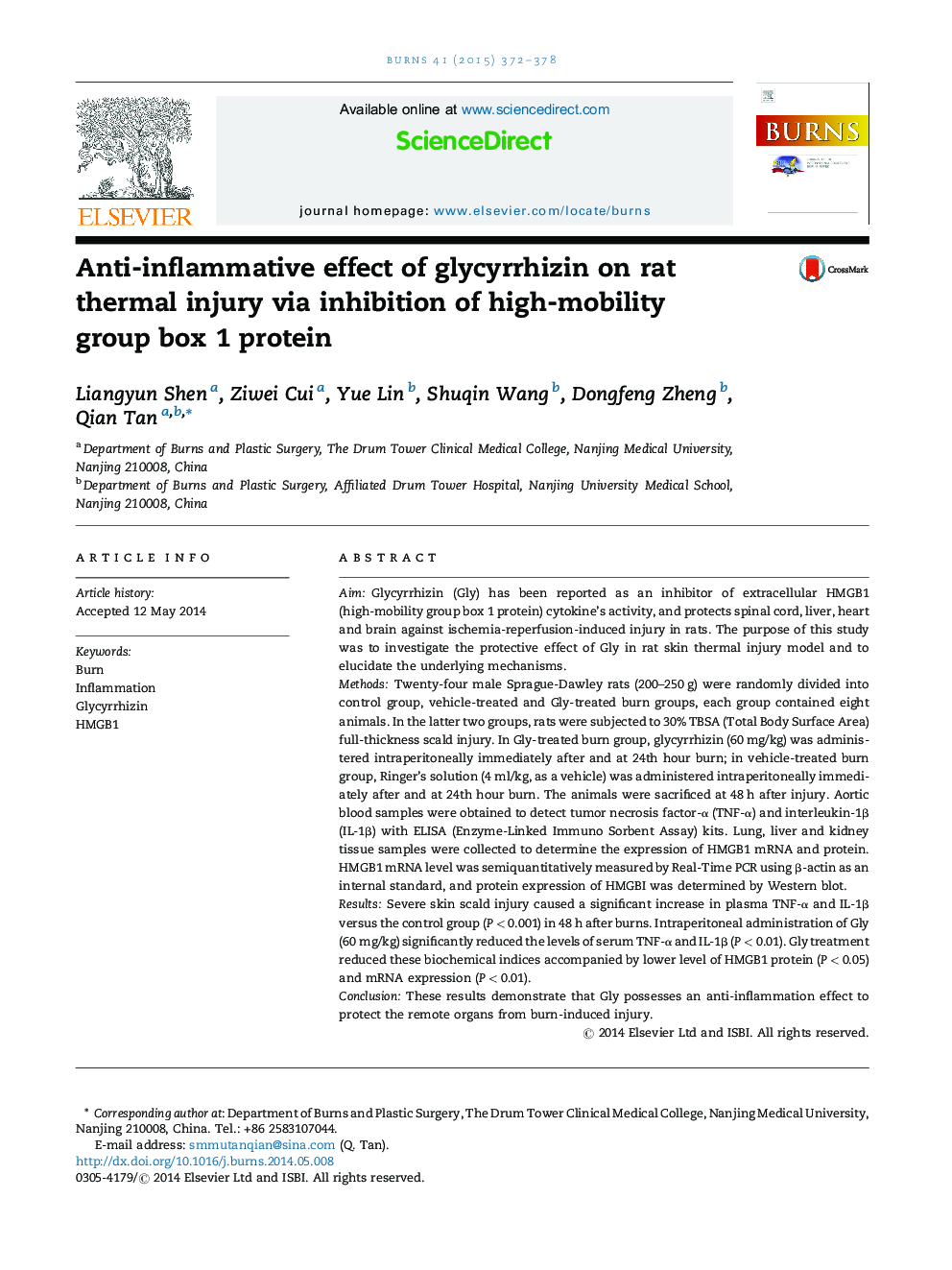| کد مقاله | کد نشریه | سال انتشار | مقاله انگلیسی | نسخه تمام متن |
|---|---|---|---|---|
| 3104455 | 1191651 | 2015 | 7 صفحه PDF | دانلود رایگان |
AimGlycyrrhizin (Gly) has been reported as an inhibitor of extracellular HMGB1 (high-mobility group box 1 protein) cytokine's activity, and protects spinal cord, liver, heart and brain against ischemia-reperfusion-induced injury in rats. The purpose of this study was to investigate the protective effect of Gly in rat skin thermal injury model and to elucidate the underlying mechanisms.MethodsTwenty-four male Sprague-Dawley rats (200–250 g) were randomly divided into control group, vehicle-treated and Gly-treated burn groups, each group contained eight animals. In the latter two groups, rats were subjected to 30% TBSA (Total Body Surface Area) full-thickness scald injury. In Gly-treated burn group, glycyrrhizin (60 mg/kg) was administered intraperitoneally immediately after and at 24th hour burn; in vehicle-treated burn group, Ringer's solution (4 ml/kg, as a vehicle) was administered intraperitoneally immediately after and at 24th hour burn. The animals were sacrificed at 48 h after injury. Aortic blood samples were obtained to detect tumor necrosis factor-α (TNF-α) and interleukin-1β (IL-1β) with ELISA (Enzyme-Linked Immuno Sorbent Assay) kits. Lung, liver and kidney tissue samples were collected to determine the expression of HMGB1 mRNA and protein. HMGB1 mRNA level was semiquantitatively measured by Real-Time PCR using β-actin as an internal standard, and protein expression of HMGBI was determined by Western blot.ResultsSevere skin scald injury caused a significant increase in plasma TNF-α and IL-1β versus the control group (P < 0.001) in 48 h after burns. Intraperitoneal administration of Gly (60 mg/kg) significantly reduced the levels of serum TNF-α and IL-1β (P < 0.01). Gly treatment reduced these biochemical indices accompanied by lower level of HMGB1 protein (P < 0.05) and mRNA expression (P < 0.01).ConclusionThese results demonstrate that Gly possesses an anti-inflammation effect to protect the remote organs from burn-induced injury.
Journal: Burns - Volume 41, Issue 2, March 2015, Pages 372–378
